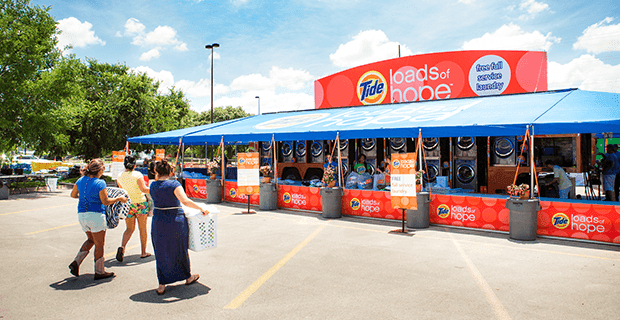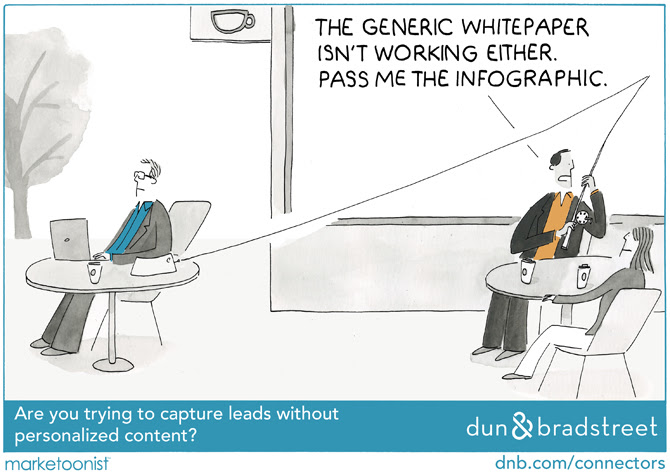
Content marketers know that good content strategy and development are increasingly dependent on brand storytelling – the art and science of pulling together information about your business in meaningful stories that align with your company’s objectives. Cutting across a wide spectrum, brand stories may reflect everything from your company’s formation and culture to how customers use your products and services to become more successful.
What’s most important to keep in mind, however, is that brand storytelling is all about communicating in a highly personal way. It’s about sharing information that emotionally resonates with your audiences and inspires them to think of you when they make a purchasing decision.
Here are a few pointers in developing brand stories:
Harness the power of your company’s actions to demonstrate personal connections. Brand stories should be created to demonstrate how company activities directly relate to your customers, partners, employees and other stakeholders, because by making stories more personal, they become more real. For example, if you have many different products and services, showcase how they benefit your customers in both anticipated and unexpected ways. Or if you are engaged in a new Corporate Responsibility program to improve the environment or better the lives of communities in need, talk about its impact and how it has inspired customers and partners to get involved.

The Tide Loads of Hope campaign at P&G does that just. Created by employees in response to Hurricane Katrina in 2005, the program provides a mobile laundromat developed “to restore normalcy and dignity through the basic comfort of clean clothing for those in the midst of chaos.” Since its formation, the program has assisted multiple U.S. communities devastated by natural disasters; established a relationship with an international relief organization; and in conjunction with Whirlpool, introduced high-efficiency washing machines to promote sustainable environmental and economic measures. The Tide Loads of Hope brand stories feature real beneficiaries of the program, which no doubt has helped drive customer loyalty for Tide products.
Categorize your brand stories to determine the ideal author and engagement elements. Once you identify a brand story, determine whether it should be developed as thought leadership, business intelligence, or dare we say it – for entertainment purposes. This will help determine who should author the material, as well as the elements to incorporate in directing the user to take a particular action.
If your content is thought leadership, an obvious choice is to incorporate a registration form to download a document or sign-up for a podcast or webinar. Alternatively, if you want a more novel way to engage your audience, incorporate a survey or better yet, a quiz or challenge! This not only taps into your audience's natural curiosity to see what they know, but it also can direct them to a landing page or social network to share their results while giving you an opportunity to provide more information or embark on a broader conversation.

For example, in an iteration of GE's SPOT THE DIFFERENCE campaign, viewers were challenged to search for the differences between two side-by-side jet engine images. The viewer could then scroll to learn from text, graphic and video screens about GE's Industrial Internet technology and what a 1% change in asset performance would mean to the bottom-line. In addition, this brand story offered links to additional information on technical details and other relevant content on GE’s offerings.
Tell your stories using engaging angles and feature interesting characters and anecdotes. Quality content is essential to content marketing, and many brand storytellers argue that the best brand stories use a journalistic approach – making sure material is as important, relevant and well-written as articles appearing in traditional media. This means developing story angles that create tension about a challenging or difficult situation, and using compelling characters – your employees, clients and others – who share their personal anecdotes to demonstrate meaningful outcomes. Once again, the more the subjects of your story reflect your actual audiences, the greater the impact.
Google videos, regarded for their moving, compelling and heartfelt stories, provide a great example of this approach. Among the most memorable is its Reunion video. It tells the story of a girl in India who, with a little help from Google Search, reunites her grandfather with his childhood friend now living in Pakistan, after more than six decades of separation. Another notable example is Parisian Love, which cleverly conveys through Google’s search product interface the story of an American establishing a life in Paris after falling in love. In this case, by directly tying romance to Google’s search capabilities, the video demonstrates the range of everyday life activities that Google can enable and enhance.
Promote your data but tie it to the personal. Since data lies at the core of marketing and is critical to gaining a competitive advantage, be sure to mine your data for nuggets that can be promoted in your brand stories. Unlike a data report that stands on its own to garner attention, data shouldn’t be the basis of your brand story – it should support the stories you create. As the VP of content marketing at BlackRock, one of the world’s largest investment firms concluded after conducting an analysis of the company’s blog, “Personal stories outperform numerical data.” (1)

Use animation and live video to enhance your story. Not only is sharing personal stories an important component in brand storytelling, so is the use of creative elements. For example, consider using live videos, (2) which provide opportunities to interview experts and cover industry events while allowing real-time Q&A with followers. You also might want to consider cartoon figures (think about all those iconic New Yorker cartoons) to add levity or a touch of irreverence to your content, while also effectively communicating powerful ideas. Cartoons are often used in sales presentations, so why not use them in your brand stories? Dun & Bradstreet is among a host of companies who use cartoons for this purpose. Breaking away from its staid image, D&B used cartoons to tee up thought leadership, and as sponsored posts on Facebook. The company reported that the cartoon-sponsored posts generated the highest engagement levels across all its content marketing forms. (3)
Don’t hesitate to be lighthearted and humorous. Brand storylines can be serious or lighthearted – an opportunity often overlooked in the world of B2B marketing. But humor is universal and typically has the effect of making brand stories more memorable and relatable. As an engineering client said to us, “We tend to forget our customers are people, too. They want to easily relate to us and what we do, and laughter is one of the best tools to create that connection."
We couldn’t have said it any better. Let your brand stories pave the way to more connections and a shortened sales cycle. After all, that's the ultimate goal of content marketing.
[1] Walgrove, Amanda. Contently Case Story: Inside BlackRock’s Ambitious, Global Storytelling Effort. June 1, 2016
[2] Live Video is offered by a variety of services including Facebook and Periscope
[3] Cartoons for Dun & Bradstreet campaigns were created by Marketoonist.